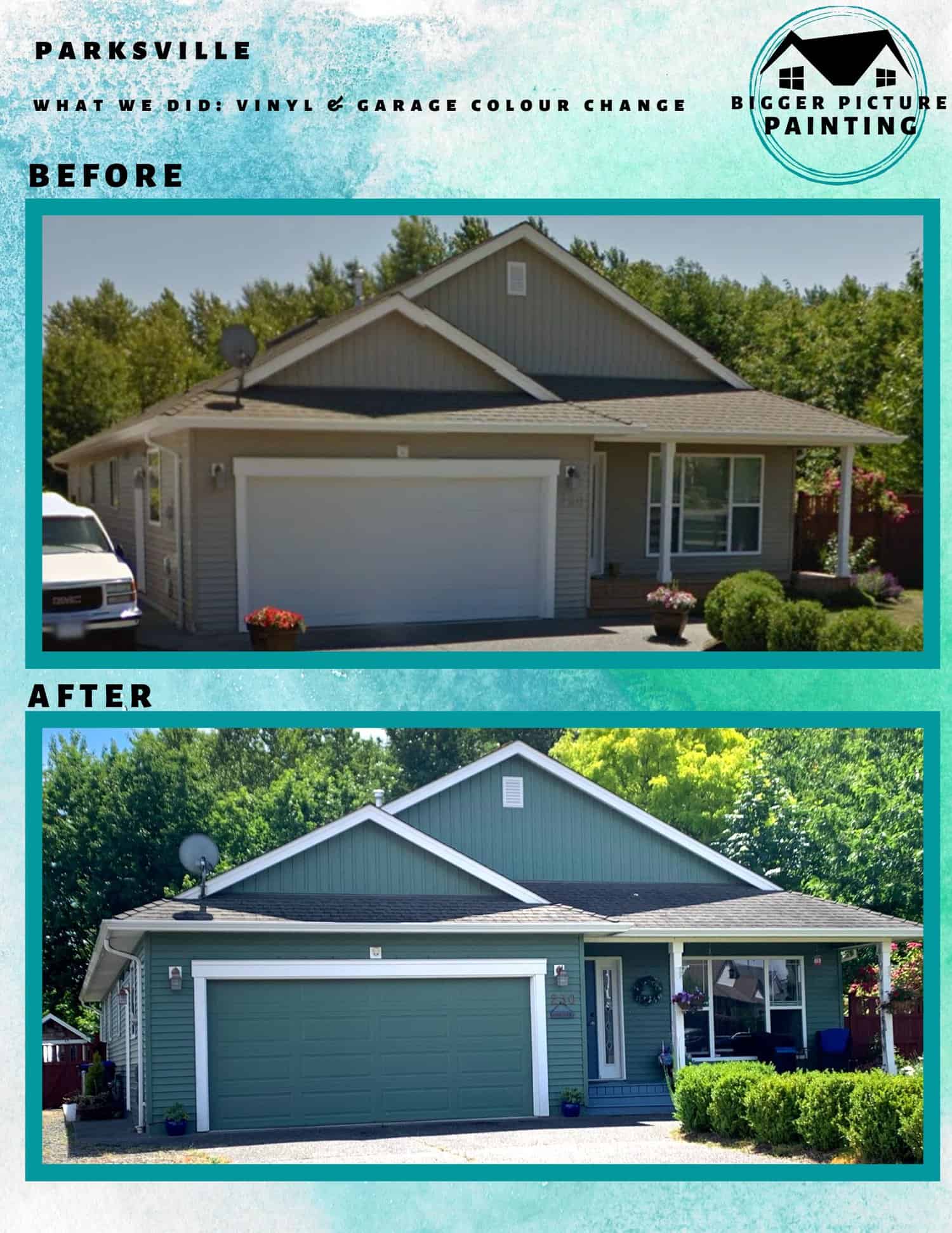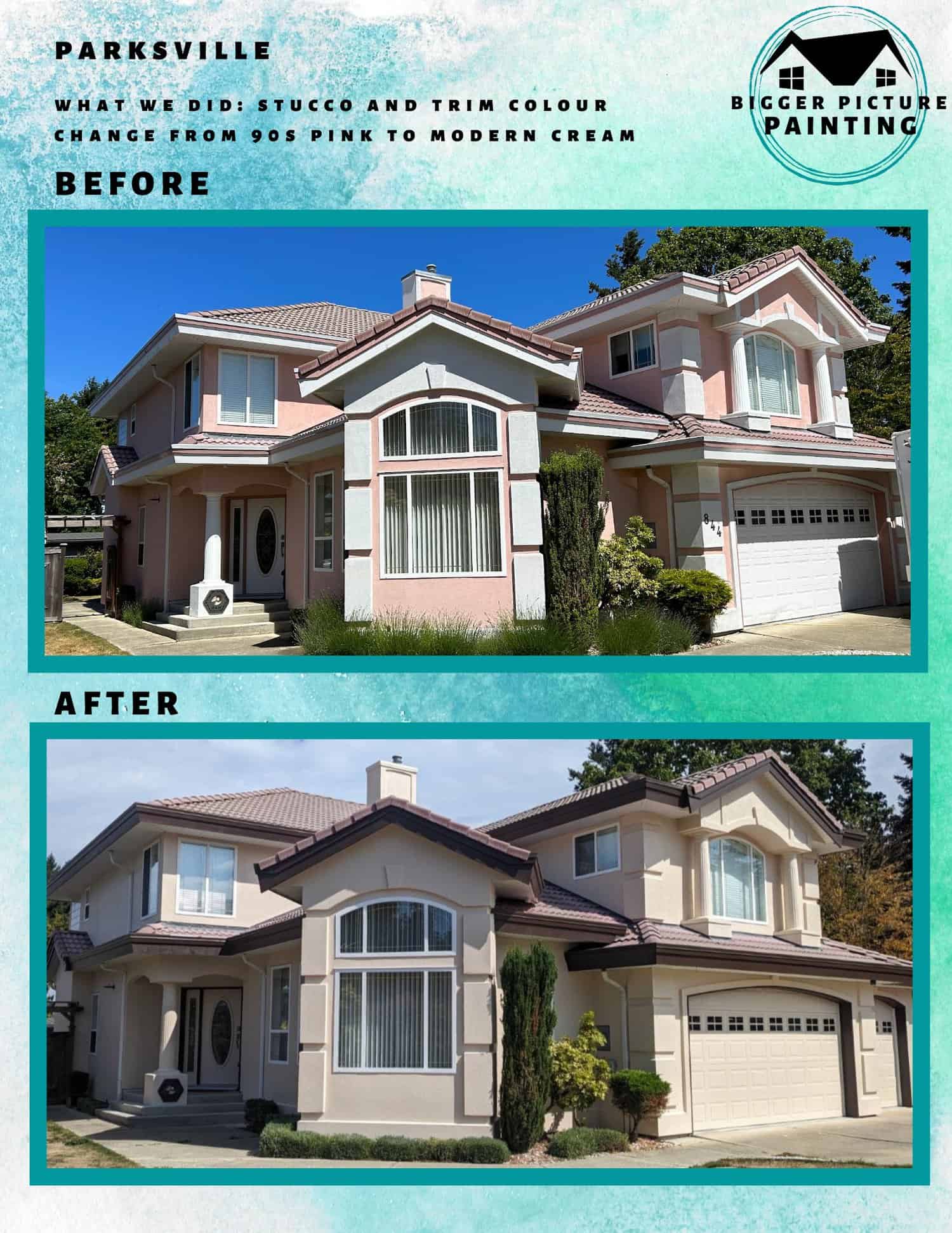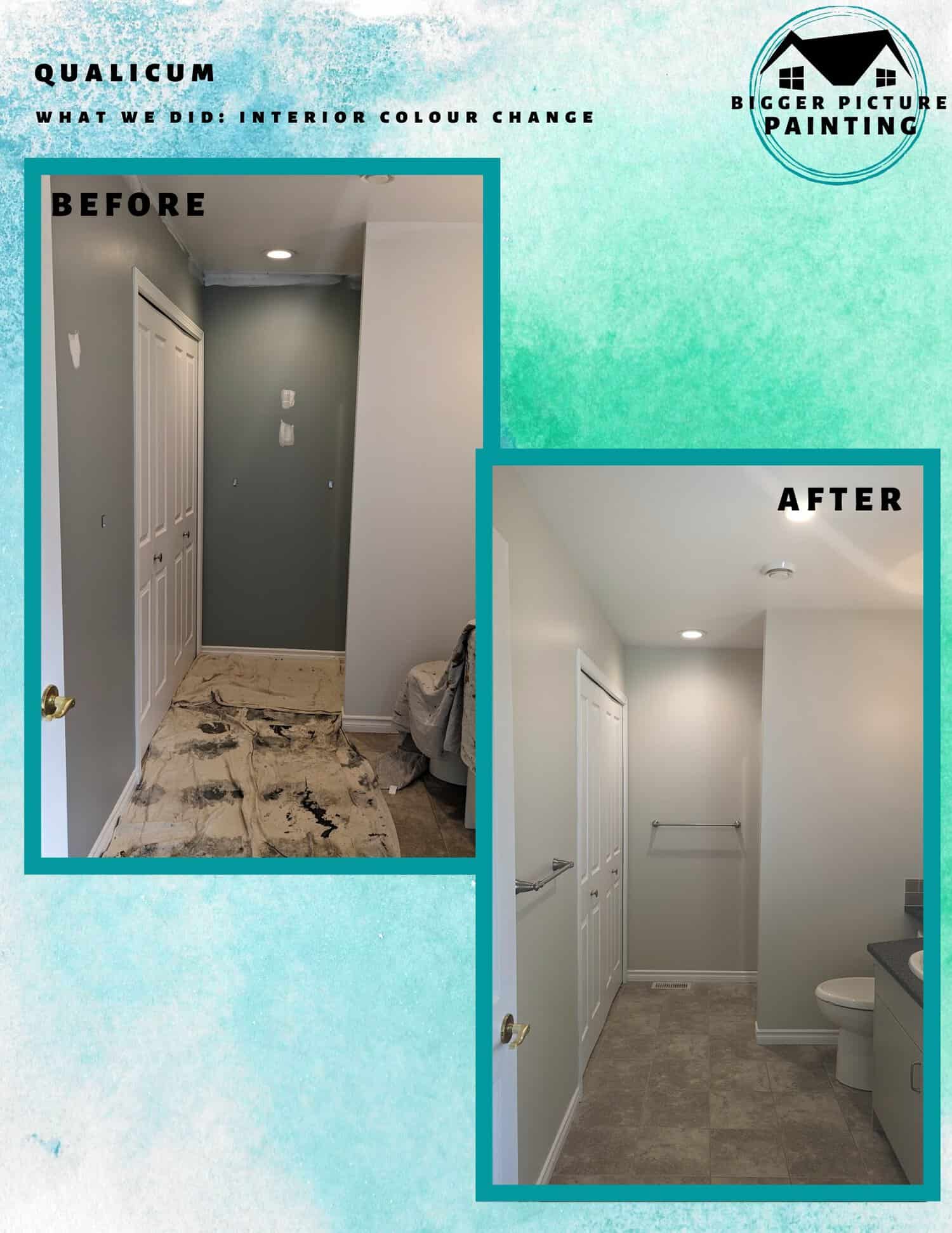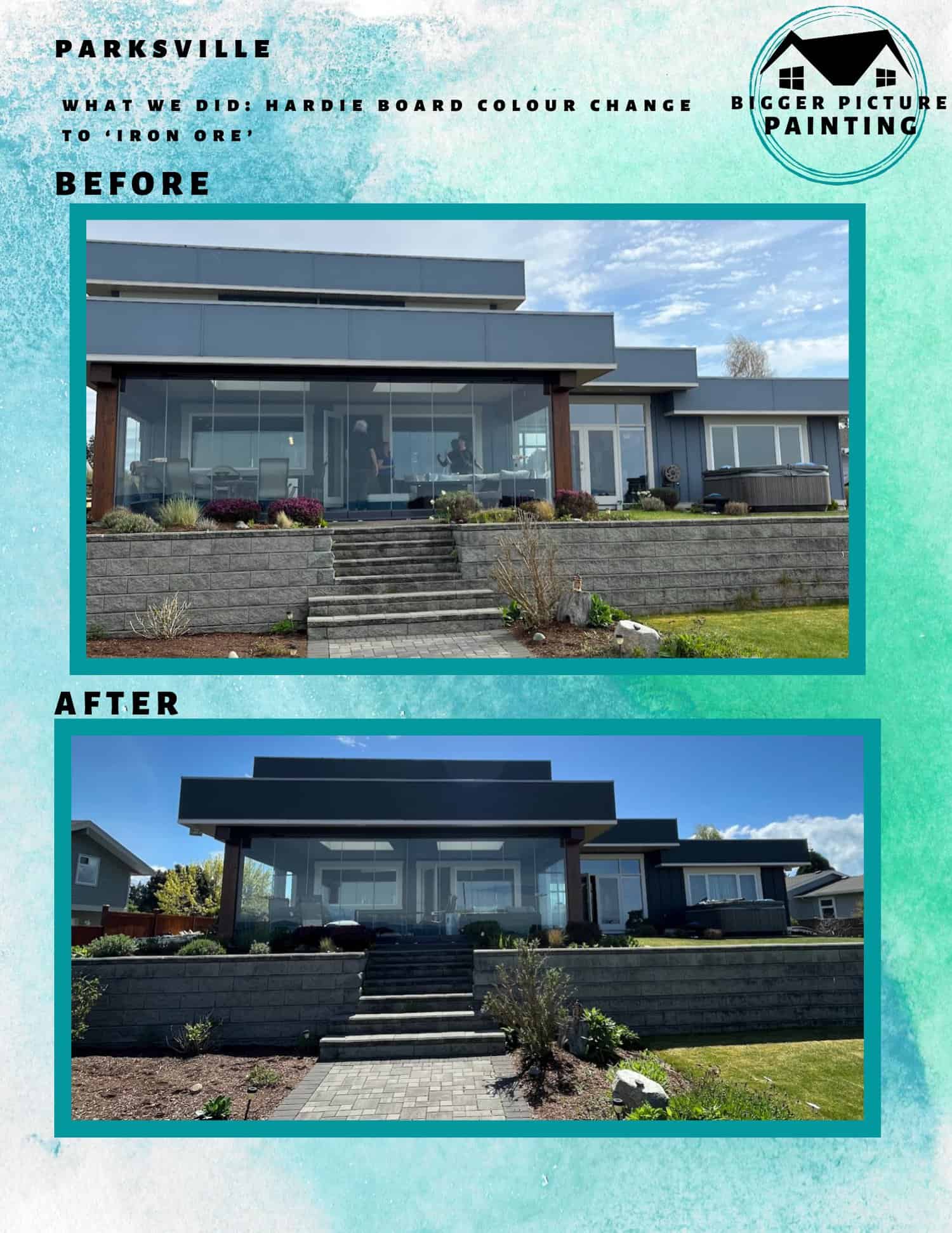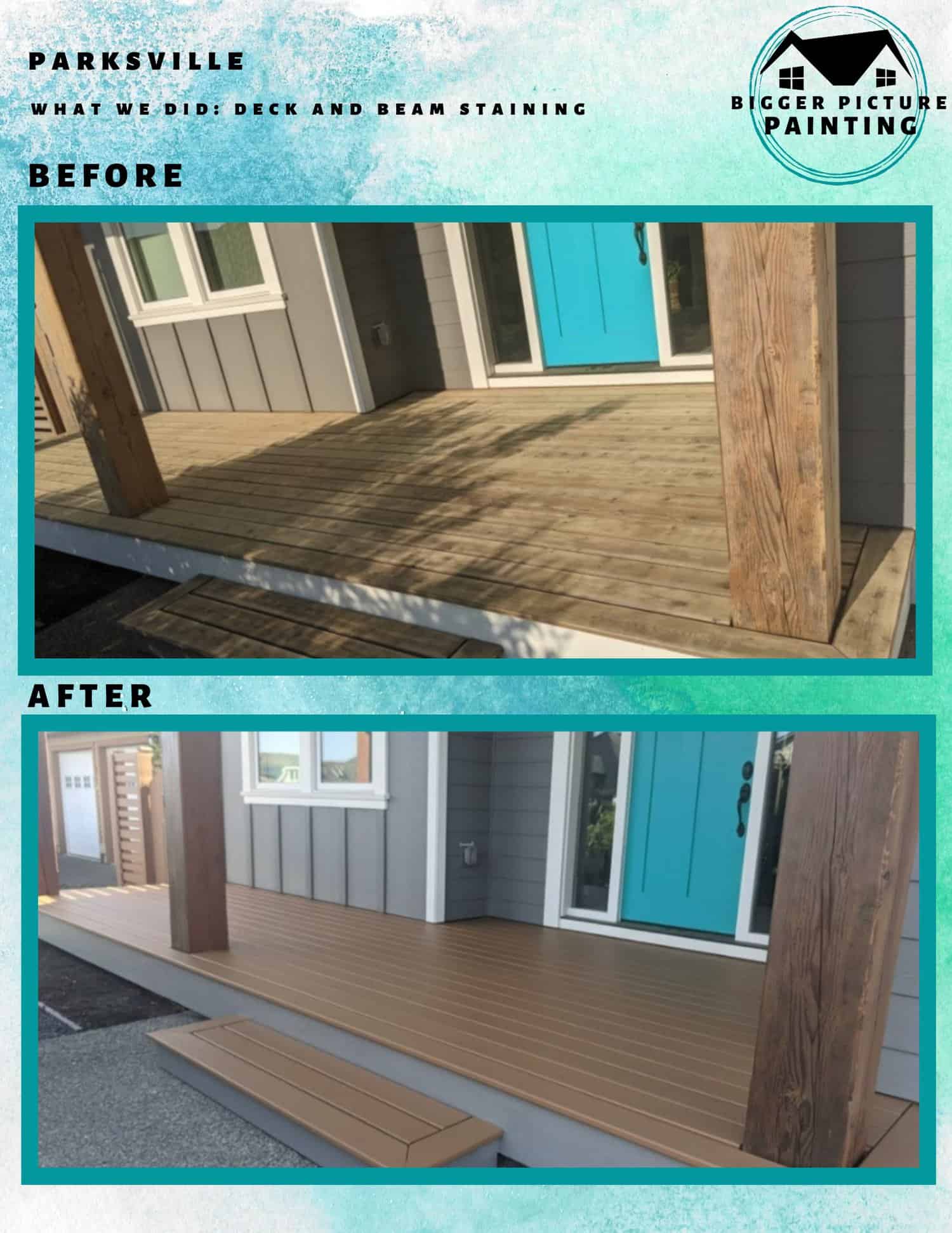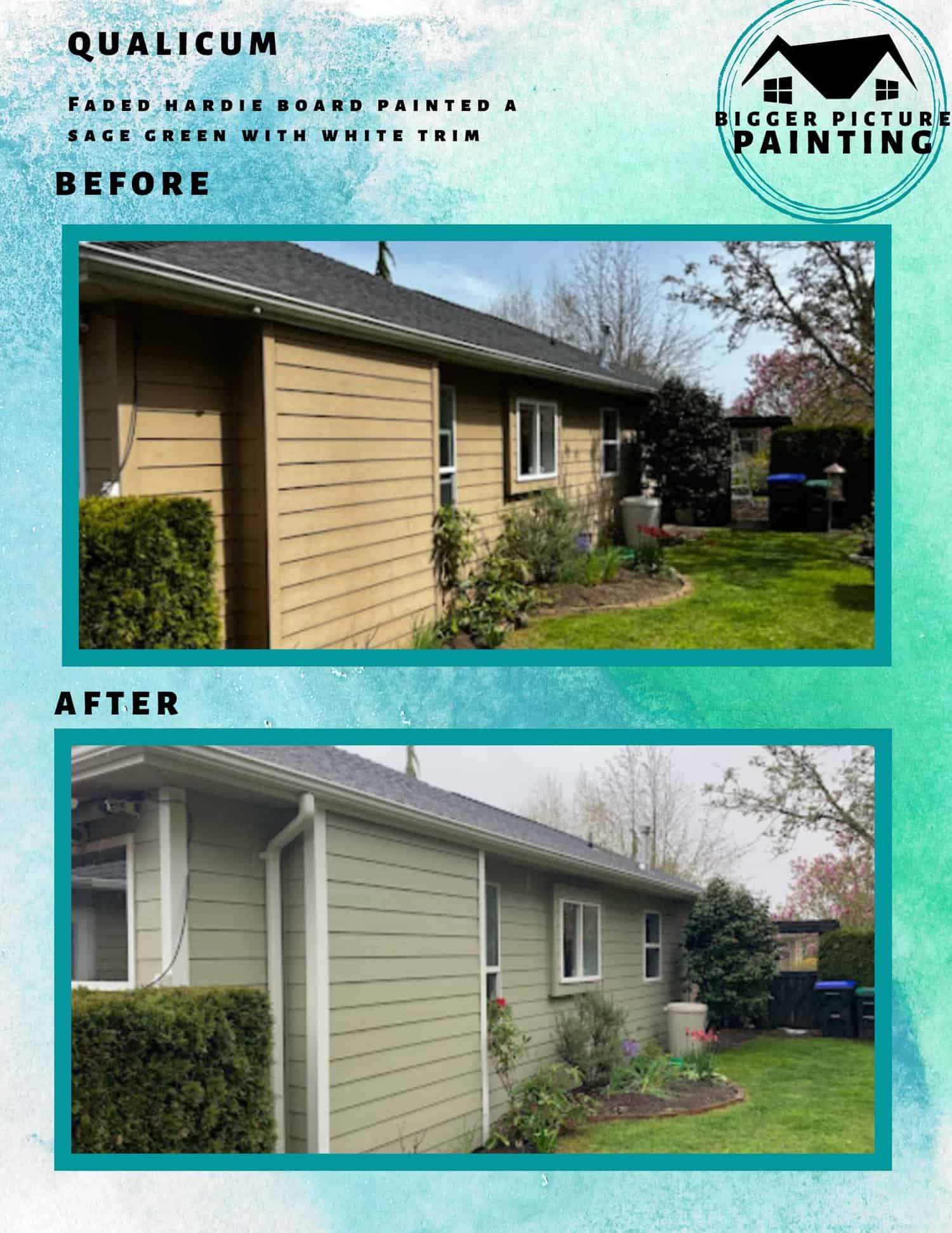Living in Mill Bay, BC, offers breathtaking coastal views and a serene lifestyle. However, the proximity to the ocean also presents some unique challenges when it comes to maintaining your home’s exterior. The salt air, frequent rain, and occasional strong winds can wreak havoc on exterior paint, causing it to wear out faster than in inland locations. To protect your home from these elements and keep it looking beautiful, it’s essential to follow the best practices for exterior painting in Mill Bay.
In this comprehensive guide, we’ll explore the specific challenges of painting in a coastal climate and provide practical tips for selecting the right products and techniques to ensure your exterior painting in Mill Bay stands the test of time.
1. Understanding the Challenges of Coastal Living
Mill Bay’s coastal environment is beautiful, but it can be tough on exterior paint. The three main factors to consider are salt air, rain, and wind, all of which can cause significant wear and tear on your home’s exterior.
- Salt Air: Salt particles in the air can settle on your home’s exterior and lead to paint deterioration. Salt accelerates the corrosion of surfaces, particularly metal, and can cause paint to peel and flake more quickly.
- Rain: Frequent rain can lead to moisture seeping into the paint, causing it to bubble, crack, or fade. In coastal areas like Mill Bay, humidity levels can also be high, which further contributes to paint damage.
- Wind: Strong winds can carry debris that chips away at your home’s exterior paint. Wind can also drive rain into cracks and crevices, causing moisture-related problems.
Understanding these challenges is the first step in choosing the right approach to exterior painting in Mill Bay.
2. Choosing the Right Paint for Coastal Conditions
When it comes to exterior painting in Mill Bay, not all paints are created equal. The coastal climate requires paints that are specifically designed to withstand salt air, moisture, and wind exposure. Here’s what to look for:
- Acrylic Latex Paints: Acrylic latex paints are water-based and highly durable, making them an excellent choice for coastal homes. They offer superior adhesion and flexibility, allowing them to withstand the expansion and contraction caused by temperature changes.
- UV-Resistant Paints: Mill Bay’s coastal location means plenty of sunlight, which can cause paint to fade over time. Choosing a paint with UV resistance will help maintain your home’s vibrant color despite sun exposure.
- Moisture-Resistant Paints: Look for paints that are formulated to resist moisture, as they will help protect your home from the frequent rain and high humidity levels in Mill Bay.
- Marine-Grade Paints: These are designed for areas exposed to salt air and water, providing excellent protection against corrosion and weathering. While typically used for boats, marine-grade paints can be a great option for homes in Mill Bay’s coastal environment.
Selecting the right paint is critical for ensuring long-lasting exterior painting in Mill Bay.
3. Preparing Your Home for Exterior Painting
Proper preparation is essential for ensuring that your exterior painting in Mill Bay adheres well and lasts for years. Given the unique challenges of coastal living, here are some key steps to follow:
- Thorough Cleaning: Before you begin painting, it’s crucial to remove any salt residue, dirt, and debris from your home’s exterior. Pressure washing is an effective way to clean the surface and remove any contaminants that could prevent the paint from adhering properly. Be sure to use a mild detergent to break down salt buildup.
- Repair Any Damage: Inspect your home for any damage caused by salt air, moisture, or wind. Repair any cracks, gaps, or peeling paint before you begin painting. Seal all openings to prevent water from seeping into the wood and causing rot.
- Priming: Priming is especially important in coastal areas like Mill Bay. A high-quality primer will help seal the surface, improve paint adhesion, and provide an extra layer of protection against the elements. Choose a primer that is specifically designed for exterior use and offers moisture resistance.
4. Applying the Paint: Techniques for Durability
Once your home is clean, repaired, and primed, it’s time to apply the paint. Here are some best practices for exterior painting in Mill Bay to ensure a durable and long-lasting finish:
- Paint in the Right Conditions: Timing is everything when it comes to exterior painting. Choose a period of stable weather with moderate temperatures, low humidity, and no rain in the forecast. Avoid painting on days when the wind is strong, as this can affect paint application and drying time.
- Use Multiple Coats: For the best protection against the coastal elements, apply at least two coats of paint. Allow each coat to dry completely before applying the next. Multiple coats will provide a thicker barrier against salt, moisture, and wind.
- Don’t Rush the Drying Process: Coastal climates can make it tempting to rush the painting process before the weather changes. However, it’s crucial to allow each layer of paint to dry fully. In Mill Bay, this may take a bit longer due to humidity levels, so plan accordingly.
- Pay Attention to Details: Pay special attention to areas that are more exposed to the elements, such as window sills, trim, and eaves. These areas often bear the brunt of the weather and may require extra coats of paint for added protection.
5. Maintenance Tips to Prolong the Life of Your Exterior Paint
Even with the best paints and techniques, exterior painting in Mill Bay will require regular maintenance to keep your home looking its best. Here are some tips for maintaining your paint job in a coastal climate:
- Regular Cleaning: Salt and debris can accumulate on your home’s exterior, especially after storms. Regularly clean your home using a hose or pressure washer to remove salt buildup and prevent damage to the paint.
- Inspect for Damage: Perform regular inspections of your home’s exterior, particularly after severe weather. Look for signs of peeling, chipping, or cracking paint and address these issues promptly to prevent further damage.
- Touch-Up as Needed: Small touch-ups can go a long way in maintaining your exterior paint. If you notice any areas that are starting to wear down, apply a fresh coat of paint to keep your home protected.
- Repaint Every 5-7 Years: In a coastal climate like Mill Bay, it’s a good idea to repaint your home every 5-7 years to ensure ongoing protection. Regular repainting will keep your home looking fresh and prevent long-term damage from the elements.
Conclusion: Protecting Your Home with the Right Exterior Painting in Mill Bay
Exterior painting in Mill Bay requires careful consideration of the coastal climate’s unique challenges. From salt air to rain and wind, your home’s exterior is constantly exposed to elements that can cause damage over time. By selecting the right paints, preparing your home properly, and using the correct painting techniques, you can ensure that your exterior painting project stands up to the test of time.
Whether you’re tackling the job yourself or hiring a professional painter, following these best practices will help protect your home’s exterior and maintain its beauty for years to come. With the right approach, you can enjoy the stunning coastal views of Mill Bay without worrying about the toll the environment takes on your home.




